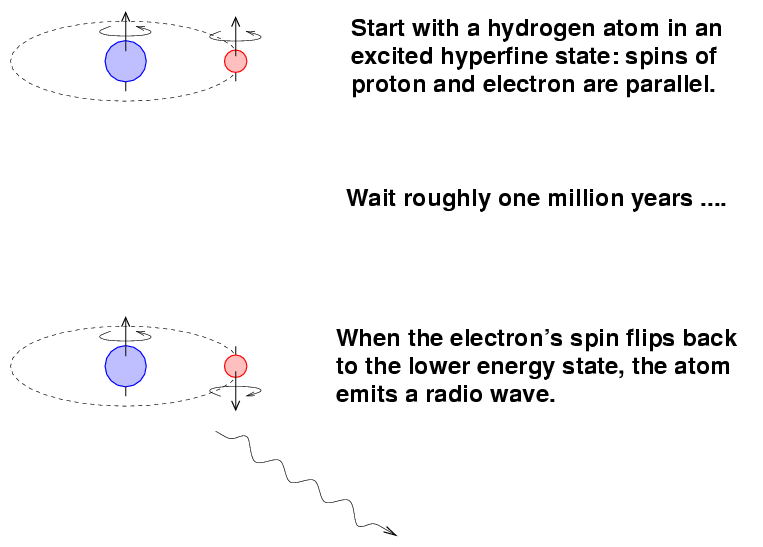

- 4.1: Experiencing Atoms at Tiburon
- 4.2: Indivisible- The Atomic Theory
- You learned earlier how all matter in the universe is made out of tiny building blocks called atoms. All modern scientists accept the concept of the atom, but when the concept of the atom was first proposed about 2,500 years ago, ancient philosophers laughed at the idea. It has always been difficult to convince people of the existence of things that are too small to see. We will spend some time considering the evidence (observations) that convince scientists of the existence of atoms.
- 4.3: The Nuclear Atom
- While Dalton's Atomic Theory held up well, J. J. Thomson demonstrate that his theory was not the entire story. He suggested that the small, negatively charged particles making up the cathode ray were actually pieces of atoms. He called these pieces 'corpuscles,' although today we know them as electrons. Thanks to his clever experiments and careful reasoning, J. J. Thomson is credited with the discovery of the electron.
- 4.4: The Properties of Protons, Neutrons, and Electrons
- Electrons are extremely small. The mass of an electron is only about 1/2000 the mass of a proton or neutron, so electrons contribute virtually nothing to the total mass of an atom. Electrons have an electric charge of −1, which is equal but opposite to the charge of a proton, which is +1. All atoms have the same number of electrons as protons, so the positive and negative charges 'cancel out', making atoms electrically neutral.
- 4.5: Elements- Defined by Their Numbers of Protons
- Scientists distinguish between different elements by counting the number of protons in the nucleus. Since an atom of one element can be distinguished from an atom of another element by the number of protons in its nucleus, scientists are always interested in this number, and how this number differs between different elements. The number of protons in an atom is called its atomic number (Z). This number is very important because it is unique for atoms of a given element.
- 4.6: Looking for Patterns- The Periodic Law and the Periodic Table
- Certain elemental properties become apparent in a survey of the periodic table as a whole. Every element can be classified as either a metal, a nonmetal, or a metalloid (or semi metal). A metal is a substance that is shiny, typically (but not always) silvery in color, and an excellent conductor of electricity and heat. Metals are also malleable (they can be beaten into thin sheets) and ductile (they can be drawn into thin wires).
- 4.7: Ions- Losing and Gaining Electrons
- Atom may lose valence electrons quite to obtain a lower shell that contains an octet. Atoms that lose electrons acquire a positive charge as a result because they are left with fewer negatively charged electrons to balance the positive charges of the protons in the nucleus. Positively charged ions are called cations. Most metals become cations when they make ionic compounds.
- 4.8: Isotopes- When the Number of Neutrons Varies
- All atoms of the same element have the same number of protons, but some may have different numbers of neutrons. For example, all carbon atoms have six protons, and most have six neutrons as well. But some carbon atoms have seven or eight neutrons instead of the usual six. Atoms of the same element that differ in their numbers of neutrons are called isotopes. Many isotopes occur naturally.
- 4.9: Atomic Mass- The Average Mass of an Element's Atoms
- In chemistry we very rarely deal with only one isotope of an element. We use a mixture of the isotopes of an element in chemical reactions and other aspects of chemistry, because all of the isotopes of an element react in the same manner. That means that we rarely need to worry about the mass of a specific isotope, but instead we need to know the average mass of the atoms of an element.
What Makes Atoms Neutral
Atoms are electrically neutral if they have an equal number of protons and electrons. Atoms that have either a deficit or a surplus of electrons are called ions. Electrons that are farthest from the nucleus may be transferred to other nearby atoms or shared between atoms.
Atoms Are Neutral Because Of The Number Of
All atoms are ? A.) neutral, with the number of protons equaling the number of electrons, which is equal to the number of neutrons B.) positively charged, with the number of protons exceeding the number of electrons C.) Negatively charged, with the number of electrons exceeding the number. Because atoms are electrically neutral, the number of protons and in an atom are equal. The total number of and neutrons in an atom is the mass number. Atoms that have the same number of protons but different number of neutrons. 1/12 the mass of a carbon-12 atom. Atomic mass unit (amu).

